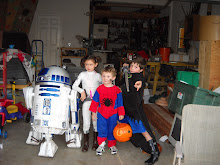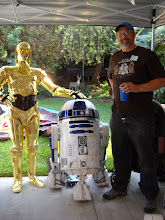
There are good, inexpensive resin data ports for R2 available from resinparts.com, but I figured I would take a crack at making my own. I'm pretty happy with the results although the angles and dimensions aren't quite in the tight range that I want. I reserve the right to change these out later with better ones.
I used MDF. I think a 1/8" piece and a 1/4" piece. First I cut the circles to the right diameter with the circle jig on my bandsaw--same method I used to cut the rings for the frame way back at the beginning. I had to do some calculating and wrangling, but I figured out the angles of the bevels on the rings and adjusted some dimensions to make it fit well in my frame. Then I cut the bevels with the circle jig on my bandsaw and using the tilting table. That gave me clean cuts and even bevels. Some minor sanding smoothed out the edges. The little end pieces were easy to cut and glue. A coat of primer, some sanding, and then finish coats should make these look just fine.
I've gotten in the habit now of making an extra of everything as long as I'm all tooled up to cut the pieces. That gives me some slack and some room to screw up.
































